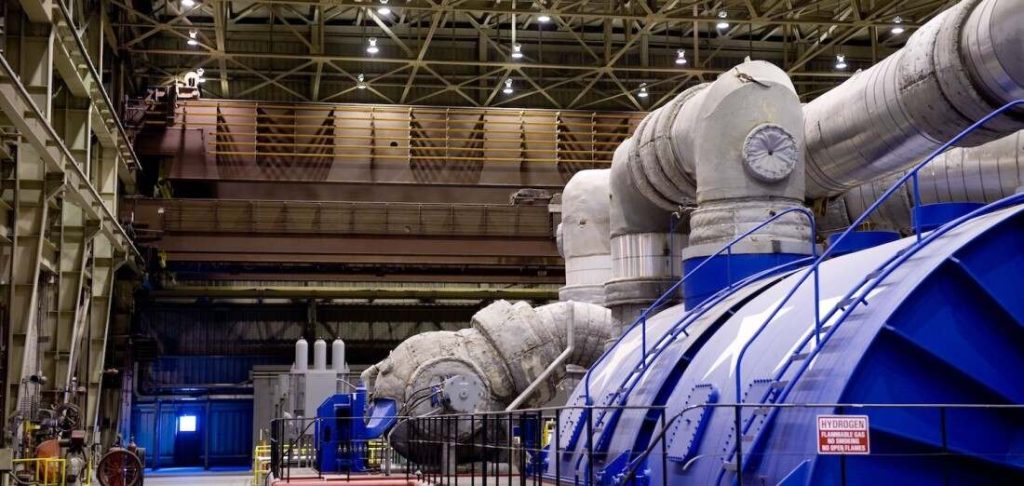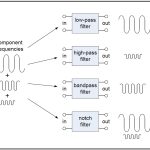Introduction
In this unit a brief idea of a modern power system is outlined. Emphasis is given to create a clear mental picture of a power system to a beginner of the course Electrical Technology. As consumers, we use electricity for various purposes such as:
1. Lighting, heating, cooling and other domestic electrical appliances used in home.
2. Street lighting, flood lighting of sporting arena, office building lighting, powering PCs etc.
3. Irrigating wast agricultural lands using pumps and operating cold storages for various agricultural products.
4. Running motors, furnaces of various kinds, in industries.
5. Running locomotives (electric trains) of railways.
Basic idea of generation
Prior to the discovery of Faraday’s Laws of electromagnetic discussion, electrical power was available from batteries with limited voltage and current levels. Although complicated in construction, D.C generators were developed first to generate power in bulk. However, due to limitation of the D.C machine to generate voltage beyond few hundred volts, it was not economical to transmit large amount of power over a long distance. For a given amount of power, the current magnitude (I=P/V), hence section of the copper conductor will be large. Thus generation, transmission and distribution of d.c power were restricted to area of few kilometer radius with no interconnections between generating plants. Therefore, area specific generating stations along with its distribution networks had to be used.
Review of conventional methods:
Thermal, hydel & nuclear power stations
In this section we briefly outline the basics of the three most widely found generating stations – thermal, hydel and nuclear plants in our country and elsewhere.
Thermal plant
Generate voltage at 50 Hz we have to run the generator at some fixed rpm by some external agency. A turbine is used to rotate the generator. Turbine may be of two types, namely steam turbine and water turbine. In a thermal power station coal is burnt to produce steam which in turn, drives the steam turbine hence the generator (turbo set) the elementary features of a thermal power plant is shown. In a thermal power plant coil is burnt to produce high temperature and high pressure steam in a boiler. The steam is passed through a steam turbine to produce rotational motion. The generator, mechanically coupled to the turbine, thus rotates producing electricity. Chemical energy stored in coal after a couple of transformations produces electrical energy at the generator terminals as depicted in the figure. Thus proximity of a generating station nearer to a coal reserve and water sources will be most economical as the cost of transporting coal gets reduced. In our country coal is available in abundance and naturally thermal power plants are most popular. However, these plants pollute the atmosphere because of burning of coals.

Stringent conditions (such as use of more chimney heights along with the compulsory use of electrostatic precipitator) are put by regulatory authorities to see that the effects of pollution is minimized. A large amount of ash is produced every day in a thermal plant and effective handling of the ash adds to the running cost of the plant. Nonetheless 57% of the generation in our country is from thermal plants. The speed of alternator used in thermal plants is 3000 rpm which means 2-pole alternators are used in such plants.
Hydel plants:
In a hydel power station, water head is used to drive water turbine coupled to the generator. Water head may be available in hilly region naturally in the form of water reservoir (lakes etc.) at the hill tops. The potential energy of water can be used to drive the turbo generator set installed at the base of the hills through piping called penstock Water head may also be created artificially by constructing dams on a suitable river. In contrast to a thermal plant, hydel power plants are eco-friendly, neat and clean as no fuel is to be burnt to produce electricity. While running cost of such plants is low, the initial installation cost is rather high compared to thermal plants due to massive civil construction necessary. Also sites to be selected for such plants depend upon natural availability of water reservoirs at hill tops or availability of suitable rivers for constructing dams. Water turbines generally operate at low rpm, so number of poles of the alternator is high. For example a 20-pole alternator the rpm of the turbine is only 300 rpm.

Advantages
· Once the dam is built, the energy is virtual y free.
· No waste or pollution produced.
· Much more reliable than wind, solar or wave power.
· Water can be stored above the dam ready to cope with peaks in demand.
· Hydro-electric power stations can increase to full power very quickly, unlike other power stations.
· Electricity can be generated constantly.
Disadvantages:
· The dams are very expensive to build.
· However, many dams are also used for flood control or irrigation, so building costs can be shared.
· Building a large dam will flood a very large area upstream, causing problems for animals that used to live there.
· Finding a suitable site can be difficult – the impact on residents and the environment may be unacceptable.
· Water quality and quantity downstream can be affected, which can have an impact on plant life.
Nuclear plants:
As coal reserve is not unlimited, there is natural threat to thermal power plants based on coal. It is estimated that within next 30 to 40 years, coal reserve will exhaust if it is consumed at the present rate. Nuclear power plants are thought to be the solution for bulk power generation. At present the installed capacity of nuclear power plant is about 4300 MW and expected to expand further in our country. The present day atomic power plants work on the principle of nuclear fission of U . In the natural uranium, U constitutes only 0.72% and remaining parts is constituted by 99.27% of U andonlyabout0.05%ofU.
The concentration of U may be increased to 90% by gas diffusion process to obtain enriched U. When U is bombarded by neutrons a lot of heat energy along with additional neutrons is produced. These new neutrons further bombard producing more heat and more neutrons.

Thus a chain reaction sets up. However this reaction is allowed to take place in a controlled manner inside a closed chamber called nuclear reactor. To ensure sustainable chain reaction, moderator and control rods are used. Moderators such as heavy water (deuterium) or very pure carbon C are used to reduce the speed of neutrons. To control the number neutrons, control rods made of cadmium or boron steel are inserted inside the reactor. The control rods can absorb neutrons. If we want to decrease the number neutrons, the control rods are lowered down further and vice versa. The heat generated inside the reactor is taken out of the chamber with the help of a coolant such as liquid sodium or some gaseous fluids. The coolant gives up the heat to water in heat exchanger to convert it to steam as shown in figure. The steam then drives the turbo set and the exhaust steam from the turbine is cooled and fed back to the heat exchanger with the help of water feed pump. Calculation shows that to produce 1000 MW of electrical power in coal based thermal plant, about 6 × 10Kg of coal is to be burnt daily while for the same amount of power, only about 2.5 Kg of U is to be used per day in a nuclear power stations.
The initial investment required to install a nuclear power station is quite high but running cost is low. Although, nuclear plants produce electricity without causing air pollution, it remains a dormant source of radiation hazards due to leakage in the reactor. Also the used fuel rods are to be carefully handled and disposed off as they still remain radioactive. The reserve of U is also limited and cannot last longer if its consumption continues at the present rate. Naturally search for alternative fissionable material continues. For example, plutonium (Pu) and (U) are fissionable. Although they are not directly available. Absorbing neutrons gets converted to fissionable plutonium Pu in the atomic reactor described above.
Disadvantages:
· Although not much waste is produced, it is very, very dangerous.
· It must be sealed up and buried for many thousands of years to al ow the radioactivity to die away.
· For all that time it must be kept safe from earthquakes, flooding, terrorists and everything else. This is difficult.
· Nuclear power is reliable, but a lot of money has to be spent on safety – if it does go wrong, a nuclear accident can be a major disaster.
· People are increasingly concerned about this – in the 1990’s nuclear power was the fastest-growing source of power in much of the world. In 2005 it was the second slowest-growing.


